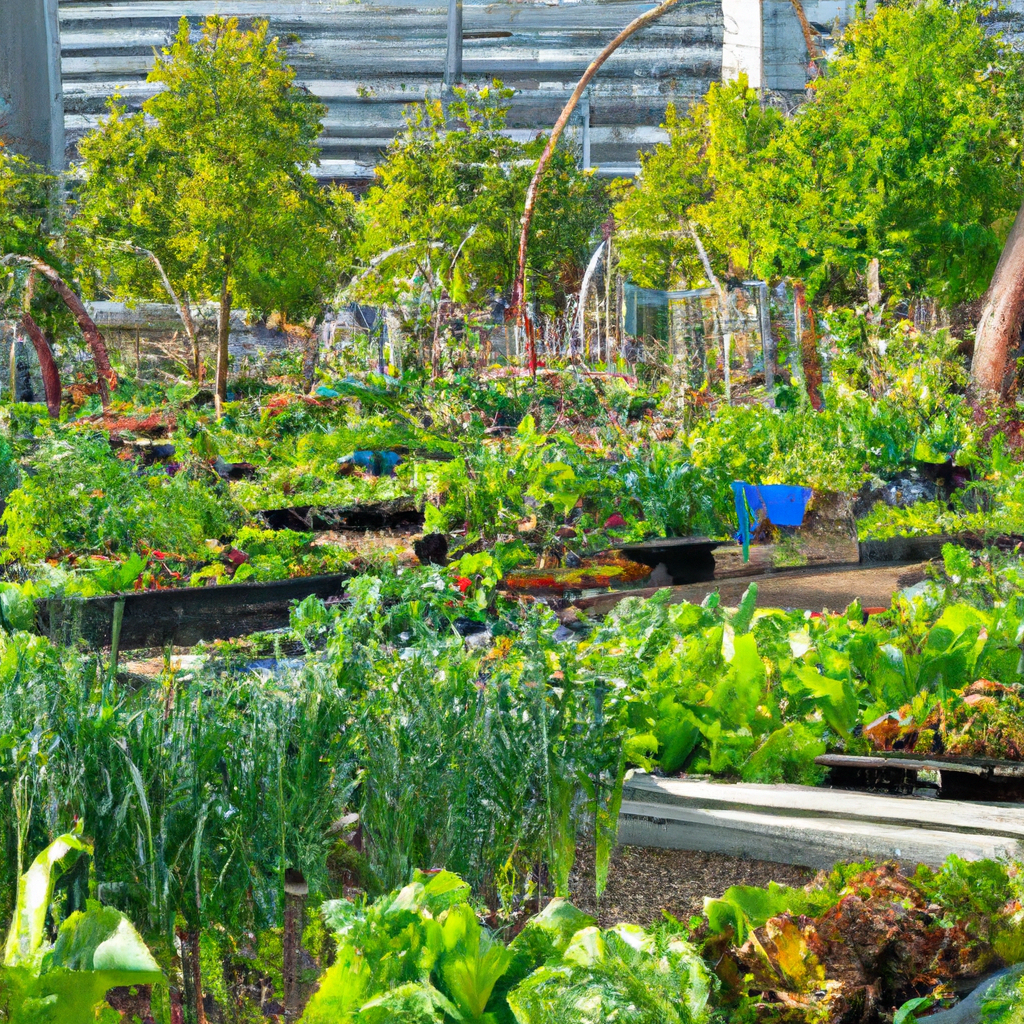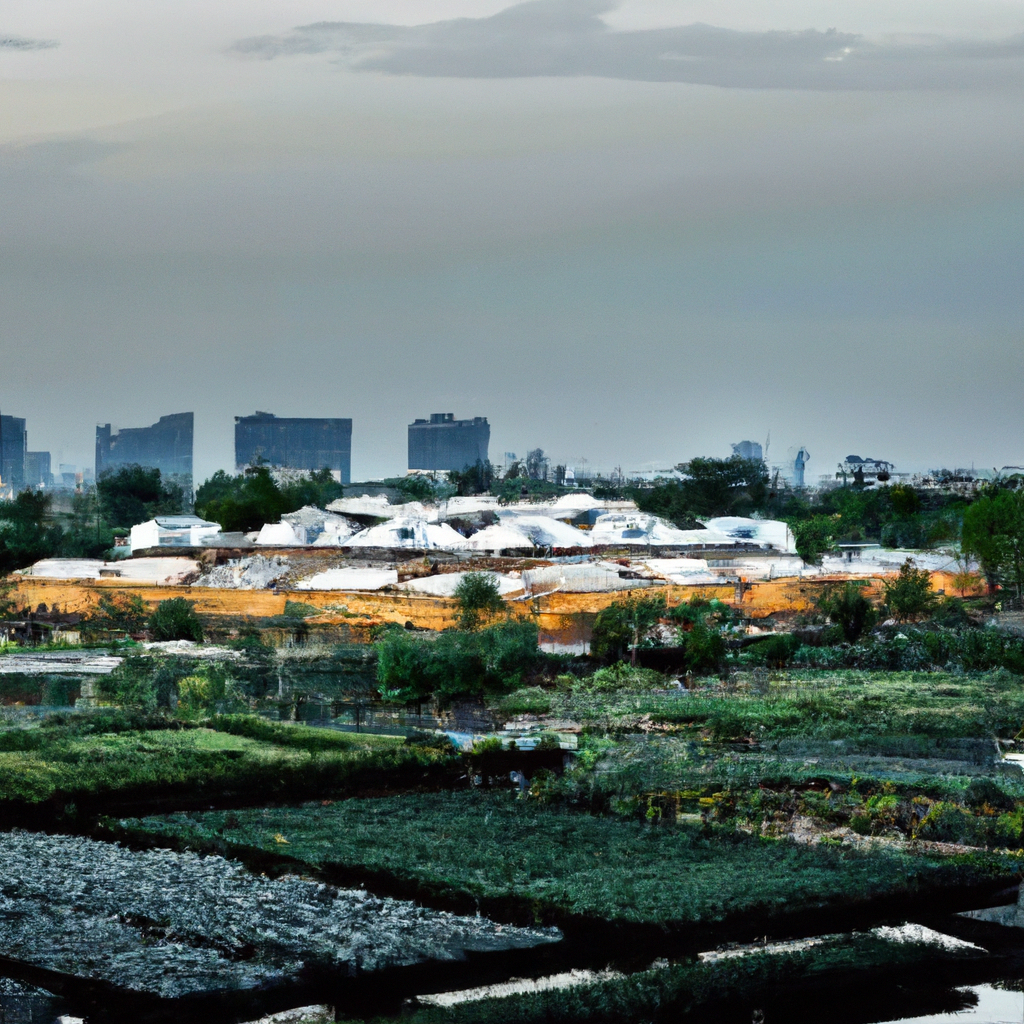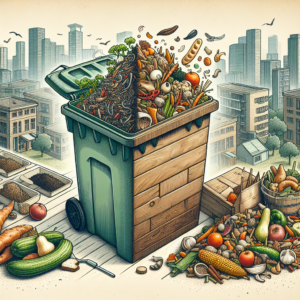
Have you ever wondered about the impact of urban farming on the environment? In a world where sustainability is a growing concern, urban farming has become a popular solution to reducing food miles and carbon emissions. By bringing agriculture closer to urban areas, we are able to promote local food production, minimize transportation distances, and ultimately decrease our carbon footprint. In this article, we will explore how urban farming is revolutionizing the way we think about food production and its positive effects on the environment.

The Role of Urban Farming in Reducing Food Miles
Definition and Explanation of Food Miles
Food miles refer to the distance food travels from its place of production to the point of consumption. It takes into account the transportation involved in the entire supply chain, including farming, processing, packaging, and distribution. The concept of food miles aims to raise awareness about the environmental impact of long-distance food transportation and promote sustainable alternatives.
Importance of Reducing Food Miles
Reducing food miles is crucial for several reasons. Firstly, long food miles contribute to increased carbon emissions, which exacerbate climate change. By reducing the distance that food needs to travel, we can directly decrease the carbon footprint of our food system. Additionally, reducing food miles can lead to fresher and more nutritious produce, as it spends less time in transit and storage. Furthermore, supporting local farmers through reduced food miles can strengthen the local economy and foster community resilience.
Benefits of Urban Farming in Reducing Food Miles
Urban farming plays a significant role in reducing food miles for various reasons.
Close Proximity to Consumers
One key advantage of urban farming is its close proximity to consumers. By growing food within cities or urban areas, farmers can bypass long-distance transportation and bring their fresh produce directly to local markets or consumers. This direct farm-to-table approach significantly reduces the overall food miles and ensures that produce reaches consumers at its peak freshness.
Reduced Transportation Requirements
Urban farming also reduces transportation requirements as farms are located near consumers. This eliminates the need for long-haul transportation to bring food from rural areas or other countries. Instead, urban farmers can utilize shorter distribution channels, such as local farmers’ markets, community-supported agriculture (CSA) programs, or grocery stores within the city. This not only reduces fuel consumption but also decreases the negative environmental impacts associated with transportation, including traffic congestion and exhaust emissions.
Freshness and Nutritional Value
With urban farming, consumers can enjoy fresher and more nutritious produce. Since the food doesn’t need to travel long distances, it can be harvested at peak ripeness and delivered to consumers quickly. This ensures that the produce retains its maximum nutritional value, taste, and texture. Additionally, urban farmers often use sustainable and organic farming methods, further enhancing the quality and health benefits of their produce.
Support for Local Economy
Urban farming fosters a sense of community and supports the local economy. By purchasing from urban farmers, consumers are investing in their local agricultural sector rather than supporting large-scale industrial farming. This helps create jobs, stimulate economic growth, and ensure food security within urban areas. Moreover, urban farms often collaborate with other local businesses, such as restaurants and food retailers, strengthening the overall local food system and promoting a sustainable and resilient urban community.

The Impact of Urban Farming on Carbon Emissions
Understanding Carbon Emissions
Carbon emissions refer to the release of carbon dioxide (CO2) and other greenhouse gases into the atmosphere. These emissions result from various human activities, including transportation, energy production, and industrial processes. Carbon emissions are a major contributor to climate change, as they trap heat within the Earth’s atmosphere and disrupt the natural balance of the planet’s ecosystem.
Contribution of Agriculture and Food Systems to Carbon Emissions
The agriculture and food systems significantly contribute to carbon emissions. This includes emissions from various sources, such as livestock production, deforestation for agricultural purposes, and the use of synthetic fertilizers and pesticides. Additionally, the transportation and supply chain involved in the global food system contribute to carbon emissions, particularly through long-distance food transportation.
Potential for Urban Farming to Reduce Carbon Emissions
Urban farming has the potential to reduce carbon emissions in several ways.
Reduced Transportation Requirements
By growing food locally, urban farming eliminates the need for long-distance transportation. This significantly reduces fuel consumption and greenhouse gas emissions associated with transporting food from distant locations. Instead of relying on trucks, ships, or planes to transport produce, urban farmers can use more sustainable methods such as bicycles, electric vehicles, or even direct on-foot delivery. This local approach to food production and distribution helps mitigate the carbon emissions that result from long transportation distances and the associated environmental impacts.
Energy Efficiency in Urban Farming
Urban farming can also contribute to carbon emission reduction through energy efficiency measures. Many urban farms incorporate innovative and sustainable practices such as hydroponics, vertical farming, and rooftop gardens. These methods often utilize renewable energy sources, such as solar panels, to power their operations. By reducing reliance on fossil fuels and adopting energy-efficient technologies, urban farms minimize their overall carbon footprint and promote cleaner energy consumption.
Carbon Sequestration Potential in Urban Areas
Urban farming can also contribute to carbon sequestration, which refers to the capture and storage of carbon dioxide from the atmosphere. Plants naturally absorb CO2 during photosynthesis, and urban farms with a significant amount of green space can help mitigate carbon emissions. Trees, plants, and green roofs in urban areas not only provide oxygen but also act as carbon sinks, reducing the overall concentration of greenhouse gases. By incorporating green spaces into urban farming practices, carbon sequestration can be maximized, contributing to the reduction of carbon emissions.

Challenges and Limitations of Urban Farming for Reducing Food Miles and Carbon Emissions
Space Constraints in Urban Areas
One of the main challenges of urban farming is the limited availability of land. Urban areas are often densely populated, leaving little room for large-scale agricultural operations. However, innovative solutions such as rooftop gardens, vertical farming, and hydroponics systems have emerged to maximize space utilization in urban environments. By utilizing vertical space or repurposing abandoned buildings, urban farmers can overcome space limitations and continue to grow food in an efficient and sustainable manner.
Scaling Up Urban Farming
While urban farming has shown promising results in reducing food miles and carbon emissions, scaling up these practices on a larger scale poses a challenge. Meeting the food demand of a growing urban population requires significant investment, infrastructure development, and supportive policies. To expand urban farming effectively, it is essential to ensure access to affordable land, provide financial incentives for farmers, and establish supportive regulations that promote urban agriculture.
Cost and Economic Viability
Another limitation of urban farming is the financial aspect. Start-up costs for urban farms can be high, particularly for technologies such as hydroponics or vertical farming. Additionally, urban farmers often face higher land and operating costs compared to their rural counterparts. To make urban farming economically viable, governments and organizations need to provide financial support, grants, and incentives to offset the initial investment and help farmers establish sustainable businesses.
Awareness and Education
Raising awareness and educating the public about the benefits of urban farming is crucial for its success. Many people are unaware of the environmental impact of long food miles or the potential of urban farming to reduce carbon emissions. By promoting the advantages of locally grown food and explaining the role of urban farming in sustainability, consumers can make informed choices that support local farmers and reduce their carbon footprint.

Conclusion
Urban farming plays a vital role in reducing food miles and carbon emissions. By bringing food production closer to consumers, urban farming minimizes the need for long-distance transportation and promotes sustainable agriculture practices. This not only reduces greenhouse gas emissions but also supports local economies, ensures fresher and more nutritious produce, and strengthens community resilience. While there are challenges and limitations to overcome, the future potential of urban farming is promising. With continued investment, supportive policies, and increased awareness, urban farming can contribute significantly to a sustainable and resilient food system. By embracing urban farming, we can take a step towards a greener and healthier future for our cities and for the planet as a whole.







